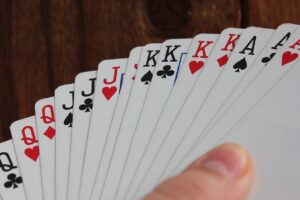Table of Contents
- Introduction to Playing Cards
- Historical Overview
- Creative Uses of Playing Cards
- Educational Benefits of Playing Cards
- Behavioral and Cognitive Development
- Popular Card Games and Their Impact
- Playing Cards in Modern Education
- How to Choose the Right Deck for Your Needs
- Conclusion: The Future of Playing Cards
Introduction to Playing Cards
Playing cards consist of more than merely a set of 52 flat rectangles; they represent a canvas of endless possibilities, appealing equally to educators, artists, and game enthusiasts. Their intrinsic versatility makes them an invaluable tool for education and creativity alike. Whether you are an artist keen to create a personalized deck of cards or a teacher eager to inspire students, playing cards opens a world of engagement and imagination. The universal appeal of playing cards stems from their widespread recognition and adaptability. They cut across generations and cultures, serving as instruments of entertainment, education, and intellectual challenge, thus cementing their status as timeless treasures in human history.

Historical Overview
The story of playing cards begins in ancient China, where they trace their roots back to the 9th century as precursors to the familiar decks of today. They were initially different in design and purpose but evolved significantly as they journeyed along trade routes, reaching Europe by the 14th century. Their transformation was marked by integrating local art, symbols, and game rules, giving rise to various regional variations. This rich heritage reflects the dynamic adaptability of playing cards, allowing them to merge seamlessly into different cultural contexts.
Creative Uses of Playing Cards
Beyond their conventional use in games, playing cards is an unexpected medium for artistic expression and creativity exploration. Magicians employ them to perform mesmerizing tricks, showcasing the potential for performing art within a single deck. Artists, too, have harnessed the unique properties of cards to build intricate sculptures, transforming simple cardboard into awe-inspiring creations through patience and perseverance. There’s beauty in their simplicity, allowing enthusiasts to invent and innovate, unlocking new avenues of creativity with every shuffle and deal.
Educational Benefits of Playing Cards
The educational potential of playing cards is immense, extending into many disciplines. They prove a dynamic and tactile way to teach mathematical concepts such as probability, fractions, and patterns, transforming abstract mathematical theories into engaging hands-on learning experiences. In language learning, playing cards can assist in expanding vocabulary and comprehension skills by providing a playful alternative to traditional methods. By blending fun with learning, card games make education accessible and enjoyable, encouraging students to engage more actively and think critically.
Behavioral and Cognitive Development
Card games are an excellent tool for developing cognitive and behavioral skills. Memory and Concentration enhance recollection and focus, while strategic games such as Poker or Bridge foster critical thinking and planning skills. Furthermore, playing cards promotes social development by necessitating interaction, teaching essential lifelong skills such as cooperation, patience, and handling wins and losses gracefully. In this way, playing cards extend beyond pure entertainment, contributing positively to mental and social development.
Popular Card Games and Their Impact
Card games occupy a special place in social gatherings worldwide. Games like Poker, Bridge, and Rummy offer much more than entertainment. They encourage strategic thought, problem-solving, and the development of social skills. These games promote teamwork and communication, and their interactive nature brings people together, making them essential in building and maintaining social bonds.
Playing Cards in Modern Education
Innovative educators are integrating playing cards into modern teaching strategies, moving beyond conventional methods to incorporate them into the curriculum. They serve as engaging tools for group activities and personalized learning, sparking curiosity and fostering a competitive spirit in students. The tangible nature of cards provides a welcome contrast to the digital screens that dominate today’s classrooms, aiding in retaining attention and emphasizing the joy of learning through play.
How to Choose the Right Deck for Your Needs
Choosing the right deck of playing cards depends on your specific needs and preferences. Considerations such as material—plastic is durable for sustained use while classic paper holds traditional charm—can influence your choice. Decorative and artistically designed cards might appeal to collectors, while a custom deck can provide a personal touch to a game night. Proper care, including storing cards in protective cases or boxes, ensures longevity and continued enjoyment.
Conclusion: The Future of Playing Cards
As time marches on, playing cards continues to be a cherished element of learning and creativity, standing the test of time as an adaptable and invaluable resource. Their enduring relevance is a testament to their versatility, and the future promises even more exciting developments and applications. The adaptability and legacy of playing cards promise that they will remain a significant part of human culture for years, encouraging new generations to engage with them in imaginative and innovative ways.